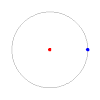IV. ANSWER THE FOLLOWING QUESTIONS IN ABOUT FOUR TO FIVE SENTENCES.
1.
Ans: The warm region has warm air. When air becomes warm, it expands. Warm air rises up and flows away. As a result the amount of air in an air column decrease and gives rise to low pressure. That is why warm region have a low air pressure.
2. Why does low pressure air spiral upward?
Ans: Because of the rotation of Earth on on its own axis, the air in low pressure area spirals inwards and move upward.
3.
Ans: When the air in a certain region cools down, the air becomes heavy and moves in downward direction. As a result the air from other regions rush towards the air column making the column heavy. This creates high pressure in that region.
4.
Ans:
During the day, the land heats up faster compared to the water. The air above the land becomes warmer creating low pressure. Comparatively the air above the sea water cooler so here high pressure is created. Therefore the wind blows from the high pressure region to the low pressure region. That is why during the day the breeze blows from the sea towards the seacoast.
5.
Ans: When a vast surface of water in ocean warms up, then the air above it also warms up and due to the the low pressure the moist air rises upward spirally. When the moist air reaches a certain height, it cools and condenses, releasing heat. This heat again warms up the air above it and makes the air to rise further with greater speed. And this process continues and forms a large rotating wind storm called a cyclone.
6.
Ans: The safety measures that is to be taken are mentioned below.
- We should remain indoors when a cyclone warning has been issued.
- We should keep a first aid kit ready.
- We should stay tuned to our local radio/tv for further information.
- Enough drinking water and food should be stored in a safe place.
- Electric power, gas, and water must be turned off during a cyclone.
- Rumours should not be spread.







0 Comments